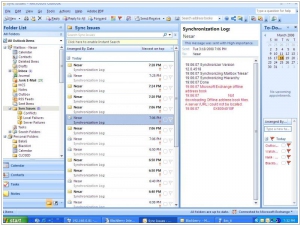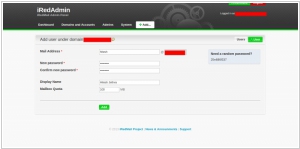Microsoft Exchange vs iRedMail
March 09, 2025 | Author: Adam Levine
20★
Microsoft Exchange Server is the server side of a client–server, collaborative application product developed by Microsoft. Exchange's major features consist of electronic mail, calendaring, contacts and tasks; support for mobile and web-based access to information; and support for data storage.
14★
Open Source Mail Server Solution. The right way to build your mail server with open source softwares. Works on Red Hat, CentOS, Debian, Ubuntu, FreeBSD, OpenBSD.
See also:
Top 10 Email Servers for business
Top 10 Email Servers for business
Microsoft Exchange and iRedMail both exist to ensure that your emails actually go somewhere rather than vanishing into the void of the internet like a misplaced sock in a washing machine. They both let you send, receive and occasionally regret emails, all while offering webmail access, calendars and a polite nod to security. If you need to integrate with something complicated like Active Directory or OpenLDAP (which sound like things invented to confuse mere mortals), both can handle it. Fundamentally, they aim to keep office workers busy and IT admins slightly exasperated.
Microsoft Exchange, emerging from the great, all-encompassing Microsoft empire in 1996, is a powerful, complex beast designed for enterprises that enjoy licensing fees and deep Outlook integration. It insists on running on Windows Server, which means if you ever considered living without Microsoft, it simply chuckles and denies you access. It syncs with Microsoft Teams and Office 365, ensuring that even your spreadsheets feel part of the email ecosystem. Exchange is for large corporations that want their email to be both omnipresent and somewhat expensive.
iRedMail, on the other hand, is the scrappy open-source alternative that arrived in 2007, built for those who think paying for email servers is a bit silly. It runs on Linux, prefers the company of Postfix and Dovecot and can be set up with frightening speed if you know your way around a command line. It’s popular among small businesses and IT tinkerers who enjoy keeping things under their own control, rather than entrusting their emails to corporate overlords. It also offers a paid version, because even open-source developers occasionally like to buy food.
See also: Top 10 Email Servers
Microsoft Exchange, emerging from the great, all-encompassing Microsoft empire in 1996, is a powerful, complex beast designed for enterprises that enjoy licensing fees and deep Outlook integration. It insists on running on Windows Server, which means if you ever considered living without Microsoft, it simply chuckles and denies you access. It syncs with Microsoft Teams and Office 365, ensuring that even your spreadsheets feel part of the email ecosystem. Exchange is for large corporations that want their email to be both omnipresent and somewhat expensive.
iRedMail, on the other hand, is the scrappy open-source alternative that arrived in 2007, built for those who think paying for email servers is a bit silly. It runs on Linux, prefers the company of Postfix and Dovecot and can be set up with frightening speed if you know your way around a command line. It’s popular among small businesses and IT tinkerers who enjoy keeping things under their own control, rather than entrusting their emails to corporate overlords. It also offers a paid version, because even open-source developers occasionally like to buy food.
See also: Top 10 Email Servers





